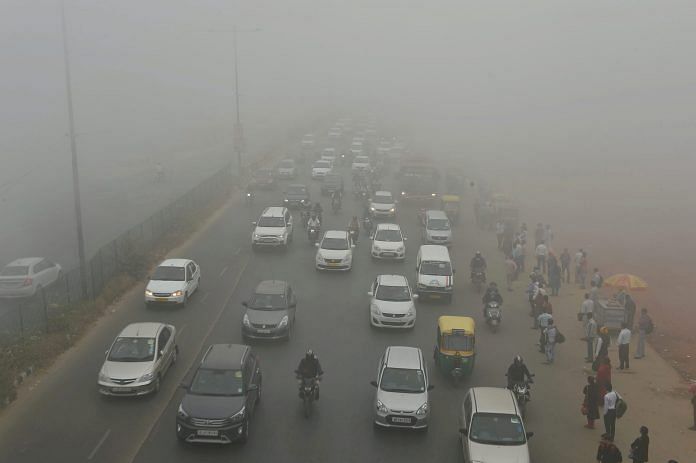Experts call it an emergency measure, suggest long-terms solutions like augmenting public transport, to check air pollution in Delhi.
New Delhi: The alarming levels of air pollution in the national capital pushed the Delhi government to announce road rationing next week through the odd-even scheme for the third time in two years.
However, a series of studies on the effectiveness of the scheme when it was implemented two times previously have produced differing and not so encouraging results.
Odd-even is a measure to ration cars using roads by allowing odd numbered cars on odd dates and even numbered cars on an even date. The first round of odd-even was launched in Delhi from 1 to 15 January 2016 and the second phase was implemented from 15 to 30 April. Both times the motive of this scheme was to reduce pollution levels in the city.
According to a 2016 report by the Environment Pollution (Prevention and Control) Authority, the first round of odd-even scheme resulted in the lowest pollution peak compared with the previous high smog episodes in the year.
The report says that “cleanest day of the season was noted during the odd and even week when weather was hostile”. However, it also mentions how within two days of the scheme ending, the PM 2.5 levels shot up by 57 per cent and once again rose to ‘severe’ category.
Council on Energy, Environment and Water (CEEW), an independent think-tank, analysed the same phase of odd-even scheme and noted that there was only marginal improvement in air quality.
Another surprising fact that emerged from this report was that there was 10 per cent increase in vehicular movement at the monitored locations because of other vehicles rushing in and no decrease in number of private vehicles. However, the assessment remained inclusive due to insufficient data.
The second phase of odd-even scheme gave a clearer picture of whether the policy was conducive enough to tackle the persistently emerging problem of air pollution in the city.
According to a report curated by the Centre for Science and Environment, during the odd-even period from 15 to 30 April 2016, air pollution took a dip during the first 10 days of the scheme but registered a sudden spike from 22 April onwards. Upon investigation, CSE found that the sudden spike in air pollution was due to a spurt in crop stubble burning cases that became widespread and intense from 23 April.
CSE thus concluded that odd-even was an important but temporary emergency measure to help control air pollution. But it also noted that there was a need to implement long-term solutions such as augmenting the public transport system.
A report released by the environment ministry on 13 May 2016 concluded “the decrease in vehicular emission was not a dominant enough factor to impact observed data”.
“Further, since meteorological factors as well as emission from various sources outside Delhi in the airshed vary from time to time, data for different periods do not lend themselves to scientifically accurate comparison,” the report said.
All these reports show that there isn’t enough data to support the effectiveness of the odd-even scheme as yet. However Polash Mukerjee, a senior researcher at CSE, had told ThePrint earlier that it is a “reactive measure in response to high levels of air pollution, and that’s why it was included in the graded action plan”.
“For it to be successful, it needs to be supplemented before and after by certain long-term measures notably in the area of public transport. That is where Delhi is severely lacking in as there has been no effort to procure more buses or to shore up public transport routes,” he added.






